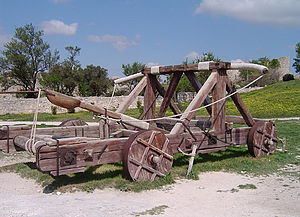In the last plot point, the main character came out with a win. The
most story-logical next big plot point must, therefore, be a failure.
After all, where's the tension for the reader otherwise?
This Crisis marks the end of the middle of your book. This failure fires
your main character from a catapult right towards the supreme
show-down.
your main character from a catapult right towards the supreme
show-down.
For this transition to be inevitable, the stakes must be raised. There
is usually either a destruction or threat of imminent destruction of a
person, object, or world. Imminent destruction usually has a time
limit attached that the hero must race against – thus also raising
the suspense level.
person, object, or world. Imminent destruction usually has a time
limit attached that the hero must race against – thus also raising
the suspense level.
The Crisis drives the main character towards the bad guy (or bad event).
The character typically makes a decision because of the Crisis that
causes the final conflit either directly or indirectly. It
depends on your story. Action-focused stories tend to take the direct
approach while character-focused stories may or may not take the
indirect approach.
The character typically makes a decision because of the Crisis that
causes the final conflit either directly or indirectly. It
depends on your story. Action-focused stories tend to take the direct
approach while character-focused stories may or may not take the
indirect approach.
The Crisis ends badly for the character but the lessons of the Middle
have been learned. Mostly. This means your character isn't going to
do much more growing in the last section of the book. Which is just
as well since the last section of the book is pretty short and
usually action-driven.
have been learned. Mostly. This means your character isn't going to
do much more growing in the last section of the book. Which is just
as well since the last section of the book is pretty short and
usually action-driven.
The Crisis is usually followed by some down-time when characters can
romance, gather resources, and make final plans. But that does not
mean that there is no tension. Your character has already started on
her trajectory towards the final battle. The clock (if you use one)
is ticking. For added tension, I like to place the Crisis for my
romantic subplot during this downtime.
romance, gather resources, and make final plans. But that does not
mean that there is no tension. Your character has already started on
her trajectory towards the final battle. The clock (if you use one)
is ticking. For added tension, I like to place the Crisis for my
romantic subplot during this downtime.




